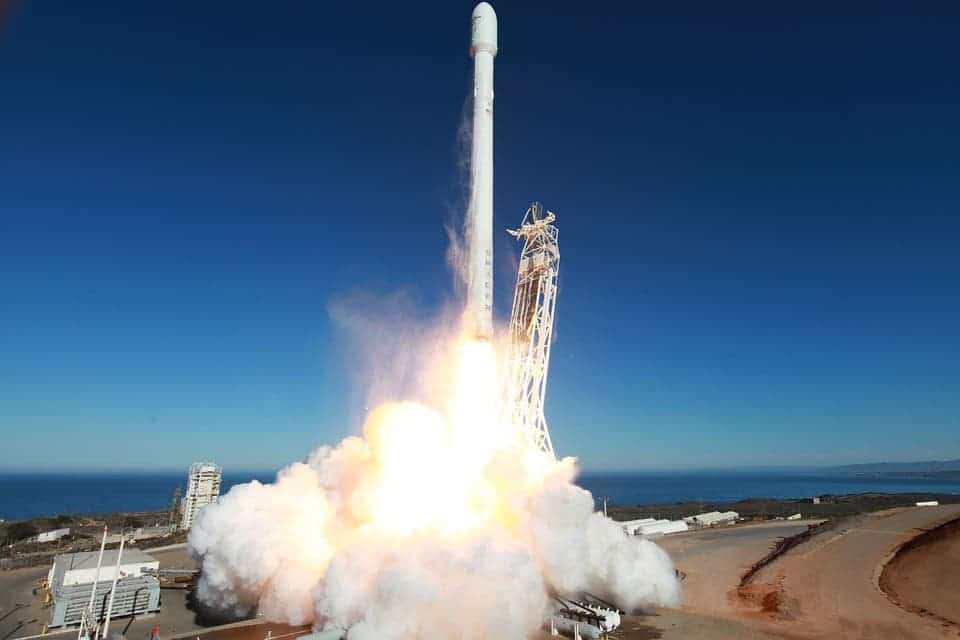
Last Thursday, SpaceX made another milestone for itself and space flight in general after it launched and landed a previously used Falcon 9 rocket. Only the 1st stage booster was re-used but the ultimate goal is to reuse all the other components, like the 2nd stage booster. Right now, to launch a payload into orbit companies have to invest tens of millions but 99% of this expense is the rocket itself which historically speaking has always been dumped in the ocean, never to be reused. A reusable rocket which you can fly again maybe hundreds of times only requires some maintenance and fuel, which is 1% of today’s space flight cost.
Judging from the achievements of bold companies such as SpaceX, but also Blue Origin which has its own working reusable rocket plans, a fully functional reusable rocket could surface within the next 12 months.
What’s left on the to-do list
After SpaceX launched the SES-10 commercial communications satellite to orbit on a Falcon 9 rocket whose first stage booster had already been used only two weeks prior, Elon Musk didn’t rest on his laurels. In a press a conference, Musk said that the milestone will empower the company to plow throw its next checklist. Right now, the next goal is to have the first stage booster ready for re-launch within 24 hours. In other words, a Falcon 9 could deliver supplies to the International Space Station in the early morning and launch a satellite for some communications company the next day.
“Our aspiration will be zero hardware changes, reflight in 24 hours,” Musk said. “The only thing that changes is we reload propellant.”
This new milestone could be achieved this year or early next year tops. It should be noted that for last Thursday’s historic launch some auxiliary components were replaced, though the air frame and engines were unaltered. Another thing that needs special attention is the rocket’s grid fins which see the brunt of damage from atmospheric re-entry. These are essential for precisely and safely landing the rocket back on Earth, such as on SpaceX’s moving unmanned barge in the Atlantic Ocean.
Incredibly proud of the SpaceX team for achieving this milestone in space! Next goal is reflight within 24 hours.
— Elon Musk (@elonmusk) March 30, 2017
Besides its two rocket boosters, there are also plans to reuse the Falcon 9 fairing — the nose cone used to protect a spacecraft (launch vehicle payload) against the impact of dynamic pressure and aerodynamic heating. During the press conference, Musk said there was a second landing attempt, this time for Falcon 9’s fairing. It had its own thruster control system and a steerable parachute. “So it’s its own little spacecraft,” Musk said.
Though it might not look like much, the fairing costs $6 million so reusing it could significantly drive down costs.
Speaking of which, the typical SpaceX launch costs around $62 million. The short term goal is to drop space launch costs to 10% of what they are today with a longer term goal of slashing costs to 1%. That’s only $620,000, which sounds absolutely preposterous today, but to Musk this is only a rational development if we’re to become an interplanetary, space fairing species per the vision he outlined last year. But we’re getting ahead of ourselves for a moment. It’s estimated reusing the first stage booster of Falcon 9 as demonstrated last week should lead to a 30% cost reduction. This means a launch like SES-10 could cost $43 million instead of $62 million.
Musk said discounts will certainly apply from now on but SpaceX has yet to reach some figures yet because they still have a lot of things to consider first, including development costs. Launch prices might stay the same or at a small discount for some time before more tempting rates apply.
“It will certainly be less than the current price of our rockets and will be far lower than any other rocket in the world,” he said.
Plans to reuse the Falcon 9 second stage booster have been abandoned as the weight of a heat shield and other equipment would impinge on payload too much for this to be economically feasible. Instead, the first fully reusable rocket will likely be the upcoming Falcon Heavy rocket, which has 27 engines and three boosters. All three stages will be recovered. It’s not clear exactly when Falcon Heavy will have its maiden flight but all clues point to mid-2017. So, possibly within 12 months, the world might already have its first fully functional reusable rocket.
What happens next is hard to predict but nothing but positive things will come out of it — and fast, like a cascading domino effect. Space tourism will be enabled for tens of thousands, companies will be able to launch better communication systems into orbit much cheaper and faster than ever before. It’s anyone’s guess how far all of this will go.
Was this helpful?



